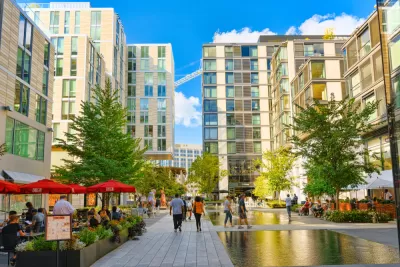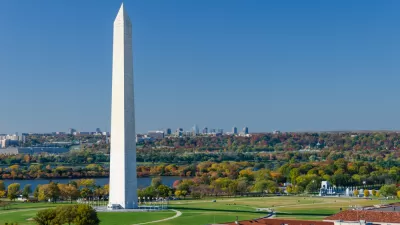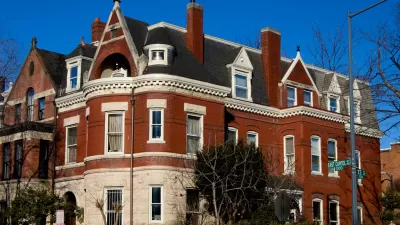In the multi-family residential market of Washington, D.C., LEED-certified buildings ask higher rents of residents.

The Washington, D.C. Office of Revenue Analysis recently published a study of the effects of LEED buildings in the District, generally considered a national leader for green building practices.
Writing for the Office of Revenue Analysis, Rozanne Sazegar explains the green building accomplishments of the District, as measured by the U.S. Green Building Council's LEED certification system:
The city has consistently led the nation in the number of LEED certifications, according to the U. S. Green Building Council (USGBC). This consistency over the years culminated in the city becoming the world’s first LEED Platinum city in 2017. In 2018, the city had 145 certified building projects with 37.1 million LEED-certified gross square feet. This amount of certified gross square footage represents 61.7 square feet of LEED-certified space per resident, the highest ratio among all states and major cities in the country.
In news coverage of the new report, Nena Perry Brown picks up on the outcomes of all the green building, as reported in the study. The most notable finding: occupants of LEED-certified building in the District pay higher rents:
Although multifamily projects are exempt from DC's LEED certification requirements, 27 have been certified since 2000, accounting for 30 percent of new multifamily buildings built in that time. On average, effective rents were 15.2 percent higher in 2018 for LEED-certified buildings than non-LEED buildings, creating a premium of 45 cents per square foot.
FULL STORY: 15 Percent: The LEED Rent Premium in DC

Alabama: Trump Terminates Settlements for Black Communities Harmed By Raw Sewage
Trump deemed the landmark civil rights agreement “illegal DEI and environmental justice policy.”

Study: Maui’s Plan to Convert Vacation Rentals to Long-Term Housing Could Cause Nearly $1 Billion Economic Loss
The plan would reduce visitor accommodation by 25% resulting in 1,900 jobs lost.

Why Should We Subsidize Public Transportation?
Many public transit agencies face financial stress due to rising costs, declining fare revenue, and declining subsidies. Transit advocates must provide a strong business case for increasing public transit funding.

Wind Energy on the Rise Despite Federal Policy Reversal
The Trump administration is revoking federal support for renewable energy, but demand for new projects continues unabated.

Passengers Flock to Caltrain After Electrification
The new electric trains are running faster and more reliably, leading to strong ridership growth on the Bay Area rail system.

Texas Churches Rally Behind ‘Yes in God’s Back Yard’ Legislation
Religious leaders want the state to reduce zoning regulations to streamline leasing church-owned land to housing developers.
Urban Design for Planners 1: Software Tools
This six-course series explores essential urban design concepts using open source software and equips planners with the tools they need to participate fully in the urban design process.
Planning for Universal Design
Learn the tools for implementing Universal Design in planning regulations.
Caltrans
Smith Gee Studio
Institute for Housing and Urban Development Studies (IHS)
City of Grandview
Harvard GSD Executive Education
Toledo-Lucas County Plan Commissions
Salt Lake City
NYU Wagner Graduate School of Public Service





























